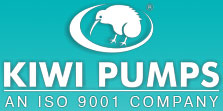
Pumps Information » Liquid Pumps
Liquid Pumps
Cavitation - Process in which small bubbles are formed and implode violently; occurs when NPSHa < NPSHr.
Dead Head - The ability of a pump to continue running without damage when discharge is closed off. Only recommended for centrifugal pumps.
Density (specific weight of a fluid) - Weight per unit volume, often expressed as pounds per cubic foot or grams per cubic centimeter.
Flooded Suction - Liquid flows to pump inlet from an elevated source by means of gravity. Recommended for centrifugal pump installations.
Flow - A measure of the liquid volume capacity of a pump. Given in gallons per hour (GPH), gallons per minute (GPM), liters per minute (L/min), or milliliters per minute (mL/min).
Fluids - Include liquids, gases, and mixtures of liquids, solids, and gases. In this catalog, the terms fluid and liquid are both used to mean a pure liquid or a liquid mixed with gases or solids that acts essentially like a liquid in pumping applications.
Head - A measure of pressure, expressed in feet of head for centrifugal pumps. Indicates the height of a column of water being moved by the pump (without friction losses).
Pressure - The force exerted on the walls of a tank, pipe, etc., by a liquid. Normally measured in pounds per square inch (psi).
Prime - Charge of liquid required to begin pumping action when liquid source is lower than pump. Held in pump by a foot valve on the intake line or by a valve or chamber within the pump.
Seals - Devices mounted in the pump housing and/or on the pump shaft that prevent leakage of liquid from the pump.
Self-Priming - Pumps that draw liquid up from below pump inlet (suction lift), as opposed to pumps requiring flooded suction.
Specific Gravity - The ratio of the weight of a given volume of liquid to pure water. Pumping heavy liquids (specific gravity greater than 1.0) will require more drive horsepower.
Static Discharge Head - Maximum vertical distance (in feet) from pump to point of discharge with no flow.
Strainer - A device installed in the inlet of a pump to prevent foreign particles from damaging the internal parts.
Sump - A well or pit in which liquids collect below floor level; sometimes refers to an oil or water reservoir.
Total Head - Sum of discharge head, suction lift, and friction loss.
Valves:
- Bypass Valve—Internal to many pump heads that allow fluid to be recirculated if a given pressure limit is exceeded.
- Check Valve—Allows liquid to flow in one direction only. Generally used in discharge line to prevent reverse flow.
- Foot Valve—A type of check valve with a built-in strainer. Used at point of liquid intake to retain liquid in system, preventing loss of prime when liquid source is lower than pump.
- Relief Valve—Used at the discharge of a positive displacement pump. An adjustable, spring-loaded valve opens when a preset pressure is reached. Used to prevent excessive pressure buildup that could damage the pump or motor.
Viscosity - The "thickness" of a liquid or its ability to flow. Most liquids decrease in viscosity and flow more easily as they get warmer.
